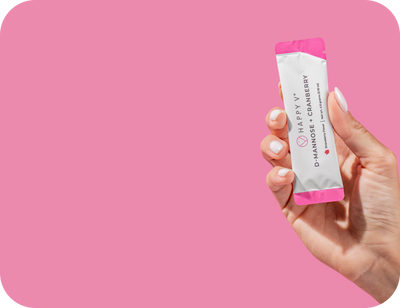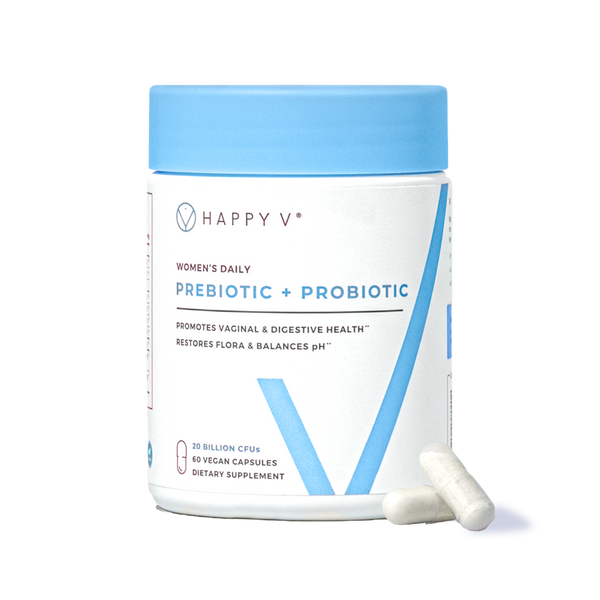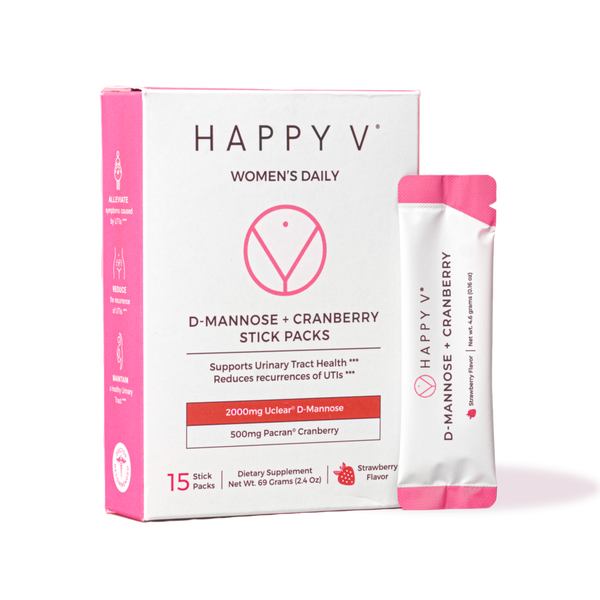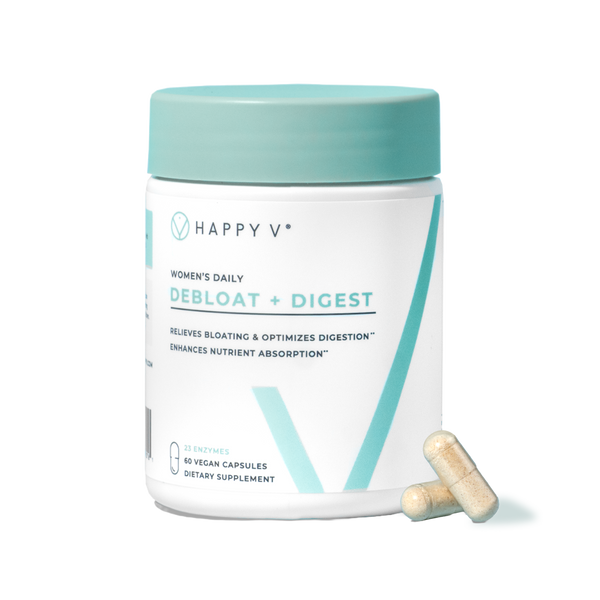- Fact Checked
- August 25, 2025
- 14 min read
The Real Deal on Baking Soda Baths for Yeast Infections: What Science Actually Says
Table of Contents
Table of Contents
When a yeast infection hits, comfort shoots straight to the top of your priority list. The itching, burning, and irritation can make you desperate for quick relief—and that’s when home remedies like baking soda baths start popping up in Google searches and TikTok tips. But here’s the thing: just because it’s “natural” doesn’t mean it’s safe or effective. Before you start raiding your pantry and filling your tub, let’s unpack what science really says about using baking soda for yeast infections and whether it’s worth your time.
This post is for informational purposes only and does not constitute medical advice. See full disclaimer below.
What Is a Yeast Infection? Understanding the Basics
First, let’s get clear on what’s really going on. Vaginal candidiasis (aka a vaginal yeast infection) is a fungal infection caused by an overgrowth of Candida albicans, a type of yeast that already lives on your body. It’s not something you “catch” from the outside. It’s a natural resident of your microbiome that only becomes a problem when other, protective bacteria decline in number, allowing pathogens like yeast to grow out of control.
Common Yeast Infection Symptoms
Tell-tale yeast infection symptoms include vaginal itching, soreness, and discharge. More specifically, you might experience:
- Intense itching in the vagina and around the vulva
- Redness and soreness of the vulva
- A thick, white, cottage-cheese- or curd-like vaginal discharge
- Burning during urination or intercourse
- Swelling around the vulva
These symptoms can range from mildly annoying to absolutely miserable, which explains why so many people are eager to try anything that might provide relief.
Why People Turn to Baking Soda Baths for Yeast Infections
The logic behind baking soda baths seems straightforward: yeast infections thrive in acidic environments, so adding alkaline baking soda to your bath water should theoretically help neutralize that environment and provide relief.
Many people are drawn to this remedy because it's:
- Inexpensive and readily available
- Natural and seemingly gentle
- Easy to do at home
- Potentially soothing for external symptoms
The appeal is understandable. When you're uncomfortable and want immediate relief, the idea of a simple, accessible solution is incredibly tempting, and science does support the notion that baking soda baths can provide some symptom relief, that relief is often temporary and the science is shaky as to if it can get to the root cause of your symptoms. Moreover, baking soda baths are not without risks, even though they are considered a “natural” home remedy.
Does It Actually Work? What the Science Says
The research on baking soda's antifungal properties is actually more promising than you might expect, but it's also more nuanced than many DIY health blogs would have you believe.
The Promising Research: 2021 study found that baking soda gels helped stop the growth of Candida cells, the fungal cells responsible for yeast infections. Some research in a 2024 review suggests that baking soda may be useful as an antifungal agent against many fungal strains that commonly affect skin and nails.
Additionally, A concentration of 10 g/L SB inhibited the growth of 80% of all the fungal isolates tested in laboratory studies, which suggests genuine antifungal activity.
The Reality Check: While these findings are encouraging, there's a crucial distinction between what happens in a petri dish and what happens in your body. Most studies have been conducted in laboratory settings, not as clinical trials with real patients experiencing active infections.
While baking soda may impact individual Candida cells, these cells are not living in a petri dish, but within your delicate, sensitive vagina. For this reason, most healthcare providers recommend against most home remedies for yeast infections—including baking soda baths—in favor of antifungals.
Risks and Safety Considerations for Baking Soda Baths
While baking soda baths might seem harmless, understanding the underlying mechanisms helps explain why these risks are real and potentially serious.
How Baking Soda Affects Your Skin and Mucosa
Here's what actually happens when you soak in a baking soda bath: The skin can absorb dissolved baking soda. When this happens, you experience:
- Increased permeability: Your skin becomes more susceptible to irritants and potential allergens
- Compromised barrier function: The protective acid mantle that normally keeps harmful microorganisms at bay becomes weakened
- Enhanced absorption: Your skin may absorb more of the dissolved baking soda than you realize
This is particularly concerning for the delicate vaginal and vulvar tissues, which have their own finely tuned pH balance that's crucial for preventing infections.
When done frequently, baking soda baths can potentially lead to:
- Chronic irritation and sensitivity
- Increased susceptibility to other infections
- Persistent pH imbalance that may actually promote yeast growth
Basically, by seeking symptom relief for one infection, you can make the vaginal environment prone to other, more frequent and intense infections.
The Regulation and Quality Control Problem
Here's another thing health blogs won't tell you: not all baking soda is created equal. When you buy baking soda for home remedies, you're dealing with:
- Variable Purity: Different brands may contain varying levels of impurities or additives that aren't disclosed on packaging. Some baking soda products contain anti-caking agents or other compounds that could cause additional irritation.
- No Standardized Dosing: Unlike medical treatments with precise dosing guidelines, home baking soda remedies rely on imprecise measurements like "tablespoons per bath." This variability means you could be exposing yourself to much higher concentrations than intended.
- Contamination Risk: Food-grade baking soda isn't held to the same purity standards as pharmaceutical preparations, potentially introducing contaminants to sensitive genital tissues.
The Psychological Risk: False Security and Delayed Care
This might be the most dangerous risk of all. Temporary symptom relief from baking soda baths can create a false sense that you're "treating" your infection effectively.
This psychological comfort can lead to:
- Underestimating Severity: Masking symptoms doesn't eliminate the underlying infection, which may be spreading or worsening while you feel temporary relief.
- Delayed Diagnosis: What you think is a simple yeast infection could be bacterial vaginosis, an STI, or another condition requiring specific medical treatment.
- Complication Development: Untreated or inadequately treated vaginal infections can lead to serious complications, including pelvic inflammatory disease (PID) or systemic infection.
How to Do a Baking Soda Bath (If You Choose This Route)
As with anything else, it’s your body, your choice. This blog is just here to help you make more informed decisions.
If you do decide to try a baking soda bath, here's the standard approach that's commonly recommended:
- Fill your bathtub with warm (not hot) water
- Add 4-5 tablespoons of baking soda to the bathwater
- Soak for 10-20 minutes
- Gently pat dry afterward - no vigorous rubbing
- Do this no more than once daily
Never try a baking soda bath if you have:
- Open wounds, cuts, or broken skin
- Known allergy to sodium bicarbonate
- Active dermatitis or eczema in the genital area
- Current use of prescription topical treatments (without medical clearance)
Consult your healthcare provider before trying a baking soda bath if you are/have:
- Pregnancy or breastfeeding
- Heart disease or hypertension
- Kidney disease or dysfunction
- Diabetes (which can affect skin healing)
- Immunocompromised conditions
- History of recurrent yeast infections
- Current use of medications that affect electrolyte balance
And before any use:
- Perform a patch test 24 hours before your first bath
- Start with the lowest suggested concentration
- Limit initial exposure to 10 minutes maximum
- Have someone available to help if adverse reactions occur
Recognizing Adverse Reactions: When to Seek Immediate Help
Stop using baking soda baths immediately and seek medical attention if you experience any of these warning signs:
Immediate Red Flags:
- Worsening redness, swelling, or irritation after a bath
- New or increased pain or burning
- Unusual discharge (change in color, smell, or consistency)
- Fever or chills
- Skin rash or hives
- Difficulty breathing (rare but possible allergic reaction)
Progressive Warning Signs (within 24-48 hours):
- Symptoms that worsen rather than improve
- New symptoms developing
- Signs of skin breakdown or open sores
- Persistent itching that becomes unbearable
The Science Behind Other Popular Natural Remedies
What if after reading this, you decide a baking soda bath is not the right move for you? What then? Are there any other natural approaches you can try?
Let's look at what research says about other commonly suggested remedies:
Apple Cider Vinegar
Apple cider vinegar is another internet favorite, but the evidence is mixed. For C. albicans (aka the top Candida species responsible for yeast infections), a 1/2 ACV had the strongest effect in laboratory studies, showing some antifungal properties. However, there's limited scientific evidence to support the effectiveness of apple cider vinegar for BV, and its use can disrupt the natural balance of bacteria in the vagina, regardless of what infections you’re looking to treat.
How to Use:
- Mix 2 tablespoons of raw apple cider vinegar in 1 cup of warm water
- Soak for 15-20 minutes
- Use no more than once daily for a maximum of 3 days
Safety Considerations: ACV can be harsh and may cause burning or irritation. Always dilute properly and test on a small area first. Avoid if you have sensitive skin or are pregnant.
Hydrogen Peroxide Douching
This is where we need to pump the brakes hard. Douching with hydrogen peroxide (or anything, really) can be harmful to your vaginal health. It can disrupt the natural bacterial balance that keeps your vagina healthy and may actually increase your risk of infections.
To keep this short and sweet: skip this one entirely.
Probiotics
Here’s where we shift from “maybe” remedies to something with real scientific weight. Probiotics, and especially those containing certain Lactobacillus strains, help restore and maintain a healthy vaginal microbiome. Instead of masking symptoms, they work with your body’s natural defenses to keep yeast from taking over.
Why this matters for yeast infections:
- Healthy Lactobacillus species lower vaginal pH and produce protective compounds that make it harder for Candida (the yeast behind most infections) to grow.
- Certain strains can even block Candida from sticking to vaginal cells, cutting off the infection before it can take hold.
Happy V’s Research-Backed Edge
Happy V’s Prebiotic + Probiotic is doctor-formulated with strains that have been studied specifically for vaginal health, like L. rhamnosus GR-1, L. reuteri RC-14, and L. crispatus.
In fact, the Happy V’s unique blend was tested against multiple Candida species. While one test method (agar diffusion) didn’t show inhibition zones, a more sensitive spectrophotometry method revealed that the blend suppressed the growth of most Candida strains tested, including Candida albicans and Candida glabrata.
This shows that Happy V’s formulation doesn’t just support vaginal balance, but can actively challenge some of the yeast species that cause recurring infections.
What to Look For in a Probiotic
- Strains that have been proven to support vaginal health
- Individual strains and CFUs lists on the supplement label
- Multi-strain formulations, since different probiotics target Candida in different ways
Safety Note
Probiotics are generally safe for most people. If you have a compromised immune system or chronic medical condition, check with your healthcare provider first.
Herbal and Alternative Sitz Bath Options
Beyond baking soda, several herbal alternatives have been traditionally used for yeast infection symptom relief. While research is often limited, some show promising antifungal properties:
Chamomile Sitz Bath
Chamomile has antimicrobial, anti-inflammatory, and antifungal properties, which can help to treat and reduce symptoms associated with genital yeast infections, like itching and burning. Chamomile tea contains flavonoids and essential oils with antifungal and antimicrobial action that help to eliminate fungal cells.
How to Prepare:
- Boil 4 cups of water and remove from heat
- Add 2-3 tablespoons of dried chamomile flowers (or 4-6 chamomile tea bags)
- Cover and steep for 10-15 minutes
- Strain the liquid and add to your sitz basin or bathtub
- Soak for 15-20 minutes once daily
Safety Considerations: Generally safe, but avoid if you have ragweed allergies. Not recommended during pregnancy without medical consultation.
Thyme and Rosemary Sitz Bath
Thyme and rosemary essential oils fight fungal and bacterial infections, helping to heal vaginal discomfort. These herbs are rich in antifungal substances like thymol, carvacrol, and camphor, which may help block the multiplication of Candida albicans cells.
How to Prepare:
- Boil 4 cups of water, then remove from heat
- Add 1 tablespoon each of dried thyme and rosemary
- Cover and steep for 15 minutes
- Strain and add to your sitz bath
- Soak for 15-20 minutes once daily
Safety Considerations: May cause skin sensitivity in some people. Avoid if you have high blood pressure or are pregnant.
Tea Tree Oil Bath (Use with Extreme Caution)
Studies have found that tea tree essential oil can kill fungus and yeast. The addition of TTO improved the antifungal properties of all the formulations against the tested strains in laboratory studies.
How to Prepare:
- Add only 5 drops of pure tea tree oil to 1 liter of warm water
- Never use undiluted tea tree oil
- Limit to once daily for a maximum of 3 days
Safety Considerations: Tea tree oil can cause severe irritation if not properly diluted. Never use during pregnancy, and discontinue immediately if any irritation occurs. Some people are highly sensitive to tea tree oil.
Stryphnodendron (Barbatimão) Bath
The Stryphnodendron tree bark, rich in flavonoids, has traditional use for its antimicrobial properties, though scientific research is limited.
How to Prepare:
- Use 2 tablespoons of dried Stryphnodendron bark per 4 cups of water
- Boil water, add bark, and simmer for 10 minutes
- Strain and cool to comfortable temperature
- Use for 15-20 minute sitz baths
Safety Considerations: Limited safety data available. Avoid during pregnancy and breastfeeding. Discontinue if irritation occurs.
Epsom Salt and Sea Salt Baths
Epsom salt can soothe the perineal area with its anti-inflammatory effects. While not specifically antifungal, these salts may provide symptomatic relief from irritation and inflammation.
How to Prepare:
- Add 1/4 to 1/2 cup of Epsom salt or sea salt to a warm bath
- Soak for 15-20 minutes
- Rinse with fresh water afterward
Safety Considerations: Generally safe but may cause dryness with frequent use. People with kidney problems should consult a healthcare provider before using Epsom salt baths.
Beyond Home Remedies
While natural approaches like baking soda baths or probiotics may offer support, it’s important to know that antifungal medications are still the most effective way to clear an active infection.
They’re designed to directly kill Candida, while home remedies mostly focus on easing symptoms or supporting prevention. The good is that many don’t require a prescription and can be purchased right over the counter.
Over-the-Counter (OTC) Antifungal Medications
These are the go-to treatments most women start with, and for good reason: they work.
- Miconazole (Monistat): Available in 1-day, 3-day, or 7-day creams or suppositories.
- Clotrimazole: Usually a 7-day treatment.
- Tioconazole: A single-dose option.
- Terconazole: Prescription-only, but available in 3- or 7-day forms.
Cure rates for these antifungals are high—as high as 80–95% when used as directed!
Prescription Medications
If your infection is stubborn or keeps coming back, your doctor might recommend:
- Fluconazole (Diflucan): A one-time pill (sometimes two doses if symptoms linger).
- Newer Options: Like Vivjoa (oteseconazole) or Brexafemme (ibrexafungerp) for recurrent cases.
- Prescription creams/suppositories: Such as terconazole or nystatin, especially if other treatments fail.
It’s worth asking your doctor about a prescription antifungal if:
- You have 4+ yeast infections per year
- OTC antifungals don’t work
- You’re dealing with non-albicans Candida (less common, harder to treat)
- You’re immunocompromised or pregnant
Where Probiotics Fit In
Here’s the good news: while antifungals are the treatment, probiotics can be the prevention. Clinical and preclinical research shows that strains like Lactobacillus rhamnosus, L. reuteri, and L. crispatus help support a balanced vaginal microbiome, which makes it harder for Candida to overgrow again. That’s why many women combine antifungal treatment for quick relief with a daily probiotic (like Happy V) to help keep future infections away.
Bottom line: Antifungals knock out the infection. Probiotics help strengthen your defenses so you’re less likely to end up in the same spot a few weeks later.
Final Thoughts
Baking soda baths might bring some temporary relief, but they’re not a cure for yeast infections. Antifungal medications remain the most effective treatment for clearing infections quickly. To help prevent them from coming back, daily probiotics—like Happy V’s clinically backed Prebiotic + Probiotic—can support a healthy vaginal microbiome and strengthen your defenses long-term.
Keep the Conversation Going
- Visit our blog for more women’s health tips.
- Join our private Happy V Facebook group to hear from others who’ve been there.
- Explore supplements designed to support your vaginal health journey.
Disclaimer: This blog is for informational and educational purposes only and is not intended to diagnose, treat, cure, or prevent any disease. Statements about supplements have not been evaluated by the Food and Drug Administration. For more information about vaginal infections, visit the CDC or speak to a licensed healthcare provider.
FAQ
Can probiotics cure a yeast infection?
Will probiotics help prevent yeast infection while taking antibiotics?
Can probiotics cause a yeast infection?
Our experts continually monitor the health and wellness space, and we update our articles when new information becomes available.
- Published on: August 25, 2025
- Last updates: August 25, 2025
Written by Hans Graubard
Edited by Hans Graubard








